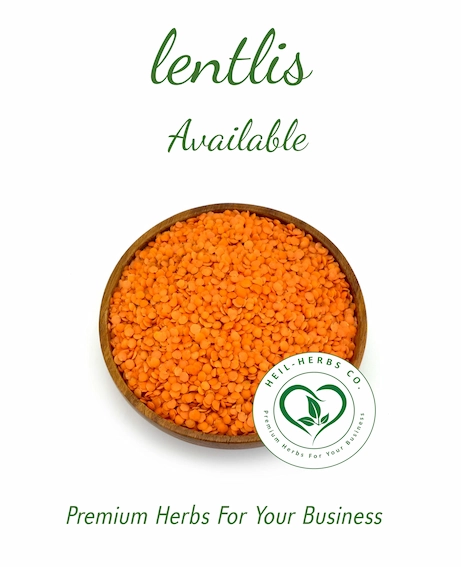lentils
Lentils
Heil Herbs Co. proudly presents our premium-quality Lentils, exported directly from the fertile lands of Egypt. Renowned for their nutritional benefits and versatility, our Lentils are perfect for various industries, including culinary, pharmaceuticals, and health supplements.
Product Highlights:
- 100% Natural: Sourced from organic farms in Egypt, free from pesticides and artificial additives.
- High Nutritional Value: Packed with protein, fiber, and essential vitamins and minerals.
- Versatile Use: Ideal for soups, stews, salads, and as a meat substitute in various cuisines.
- Export Quality: Meets strict international standards for B2B trade.
Specifications:
- Latin Name: Lens culinaris
- HS Code: 0713.10
- Origin: Egypt
- Packing Options: Available in bulk or custom packaging solutions tailored to meet client requirements.
Shipping:
- Lentils Standard Packages: 25 kg bags
- 20 ft Container: Can load up to 10 tons
- 40 ft Container: Can load up to 20 tons
- 40 HC Container: Can load up to 24 tons
Why Choose Heil Herbs Co.?
At Heil Herbs Co., we are committed to sustainable farming practices and ethical sourcing. Our Lentils are carefully harvested and processed to ensure a high-quality product. We offer flexible packing options and reliable shipping services to cater to the specific needs of our B2B clients worldwide.
Applications:
- Culinary: Use in soups, salads, and as a meat alternative in various dishes for their rich flavor and nutritional content.
- Pharmaceuticals: Incorporated into health formulations due to their high fiber and protein content.
- Health Supplements: Ideal for dietary supplements aimed at enhancing nutrition and wellness.
Contact Us:
For inquiries and bulk orders, please visit Heil Herbs Co. or contact our sales team directly at sales@heil-herbs.com. If you are interested in this product, click here to send us an email.

